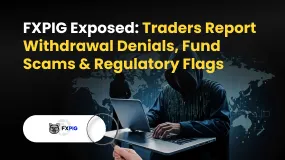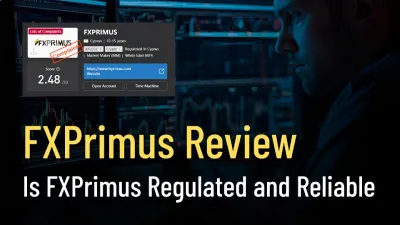简体中文
繁體中文
English
Pусский
日本語
ภาษาไทย
Tiếng Việt
Bahasa Indonesia
Español
हिन्दी
Filippiiniläinen
Français
Deutsch
Português
Türkçe
한국어
العربية
Bad Actor Drained More than 7,500 ETH Out of Uniswap LP Wallets
Abstract:The bad actor targeted over 70,000 ETH wallets, spending over 8 ETH in gas fees. How the phishing attack was carried out, including the technical side and defensive measures.

Hackers are becoming more sophisticated and employ different tactics to deceive investors. A method that is becoming increasingly popular is a malicious airdrop.
Take Advantage of the Biggest Financial Event in London. This year we have expanded to new verticals in Online Trading, Fintech, Digital Assets, Blockchain, and Payments.
Initially, it was believed Uniswap's protocols were exploited. It was later determined that a phishing attack drained approximately $8 million out of Uniswap's liquidity providers.
Uniswap is a popular decentralized exchange (DEX) for Ethereum including tokens on the ETH mainnet.
How the Phishing Attack Starts?
In the first stage, the bad actor hits the explorers index so the 'From' address appears legitimate, 'Uniswap V3: Positions NFT'. This is called an event pollution attack.

Tokens are sent from the bad actor to numerous addresses. Investors that receive the tokens are curious why 'Uniswap' send them tokens. When checking the token's name the investors are led to the following website: uniswaplp.com (do not visit).
The LP that follows Uniswap in the url stands for liquidity provider.
Upon visiting the website, the following message is displayed:
Liquidity provider rewards At 14:00 UTC, July 11, 2022, Uniswap distributed the UniswapLP tokens, based on the provided liquidity, to the existing UNI-V3 liquidity providers.
“If you have received the UniswapLP tokens, then you are eligible to claim the UNI tokens from this page by clicking on the below button.”

As the investors already have received tokens from 'Uniswap' and that only 10k UNI will be airdropped, if claiming is not done immediately there is a risk of the investors missing a portion from the 10,000 UNI.
Employing fear of missing out (FOMO) plays a major role in luring investors into the trap. Upon clicking on the document, a call is made to ethall().
The user's browser info and wallet address are sent to /66312712367123.com.
It may then ask the user to send the tokens to their ETH address. Upon doing so, the bad actor gains full access to the victim's address and drains the account.
The above findings were reported by Harry Denley.
The bad actor sent the 'uniswap' tokens to over 70,000 addresses, spending a substantial amount (over 8 ethers) on gas fees. Among the targeted addresses were large ETH holders.
The vast majority of crypto investors are aware of these scams. However, many are caught off guard if they do not pay full attention to the information in from of them.
The bad actor already commenced laundering the stolen ethers via Tornado Cash, sending 100 ETH per transaction to the mixer.
How to Defend against Similar Attacks?
There are several methods that can be adopted that may reduce the odds of becoming a phishing attack victim in the crypto space. Airdrops must be verified through the project's social media channels.
It may be Twitter, Telegram or Discord etc. If we take a scenario where the project's social media accounts are compromised, which has occurred in the past, paying attention to the permissions that are given upon interacting with the contract including the web address may help.
Another method, which is fairly new is using Forta, which offers real-time security. Forta's threat detection kit may be used for threat detections in NFTs, stablecoins, bridges and more.
ZenGo wallet has a feature called ClearSign that verifies interactions with contracts. As attacks are becoming more sophisticated, it is essential to take the required time to investigate the legitimacy of what you receive including in emails.

Disclaimer:
The views in this article only represent the author's personal views, and do not constitute investment advice on this platform. This platform does not guarantee the accuracy, completeness and timeliness of the information in the article, and will not be liable for any loss caused by the use of or reliance on the information in the article.
Read more

FXPIG Exposed: Traders Report Withdrawal Denials, Fund Scams & Regulatory Flags
Do you face massive losses due to astonishing spreads at FXPIG? Have you witnessed multiple trade executions by the Georgia-based forex broker even though you wanted to execute a single order? Has this piled on losses for you? Is the FXPIG withdrawal too slow? Maybe your trading issues resonate with some of your fellow traders. In this FXPIG review article, we have shared these issues so that you can introspect them thoroughly before deciding on the best forex trader.

Understanding What Makes a Good Spread in Forex
Find out what a good spread in forex trading is, typically between 0 to 5 pips, and why it matters for traders aiming to reduce expenses.

Does WealthFX Generate Wealth or Losses for Traders? Find Out in This Review
The name WealthFX sounds appealing for all those wishing for a rewarding forex journey. However, behind the aspiring name are multiple complaints against the Comoros-based forex broker. These trading complaints dampen the broker’s reputation in the forex community. In this WealthFX review article, we have shared some of these complaints here. Take a look!

FXPrimus Review: Is FXPrimus Regulated and Reliable for 2025?
FXPrimus is a CySEC-regulated forex broker offering MT4, MT5, and WebTrader with flexible leverage and diverse trading instruments since 2009.
WikiFX Broker
Latest News
150 Years Of Data Destroy Democrat Dogma On Tariffs: Fed Study Finds They Lower, Not Raise, Inflation
The Debt-Reduction Playbook: Can Today's Governments Learn From The Past?
FIBO Group Ltd Review 2025: Find out whether FIBO Group Is Legit or Scam?
Is INGOT Brokers Safe or Scam? Critical 2025 Safety Review & Red Flags
Trillium Financial Broker Exposed: Top Reasons Why Traders are Losing Trust Here
Amillex Withdrawal Problems
IEXS Review 2025: A Complete Expert Analysis
IEXS Regulation: A Complete Guide to Its Licenses and Safety Warnings
Oil and gas giant Wood plc sold to Dubai engineering firm
FONDEX Review: Do Traders Really Face Inflated Spreads & Withdrawal Issues?
Currency Calculator




